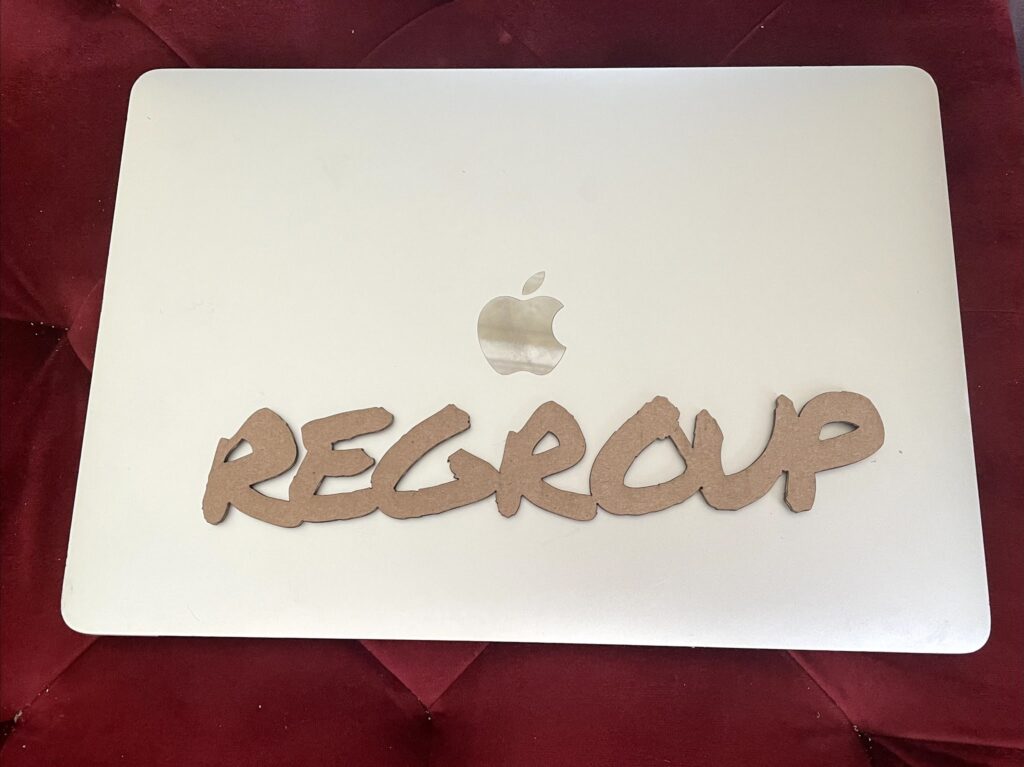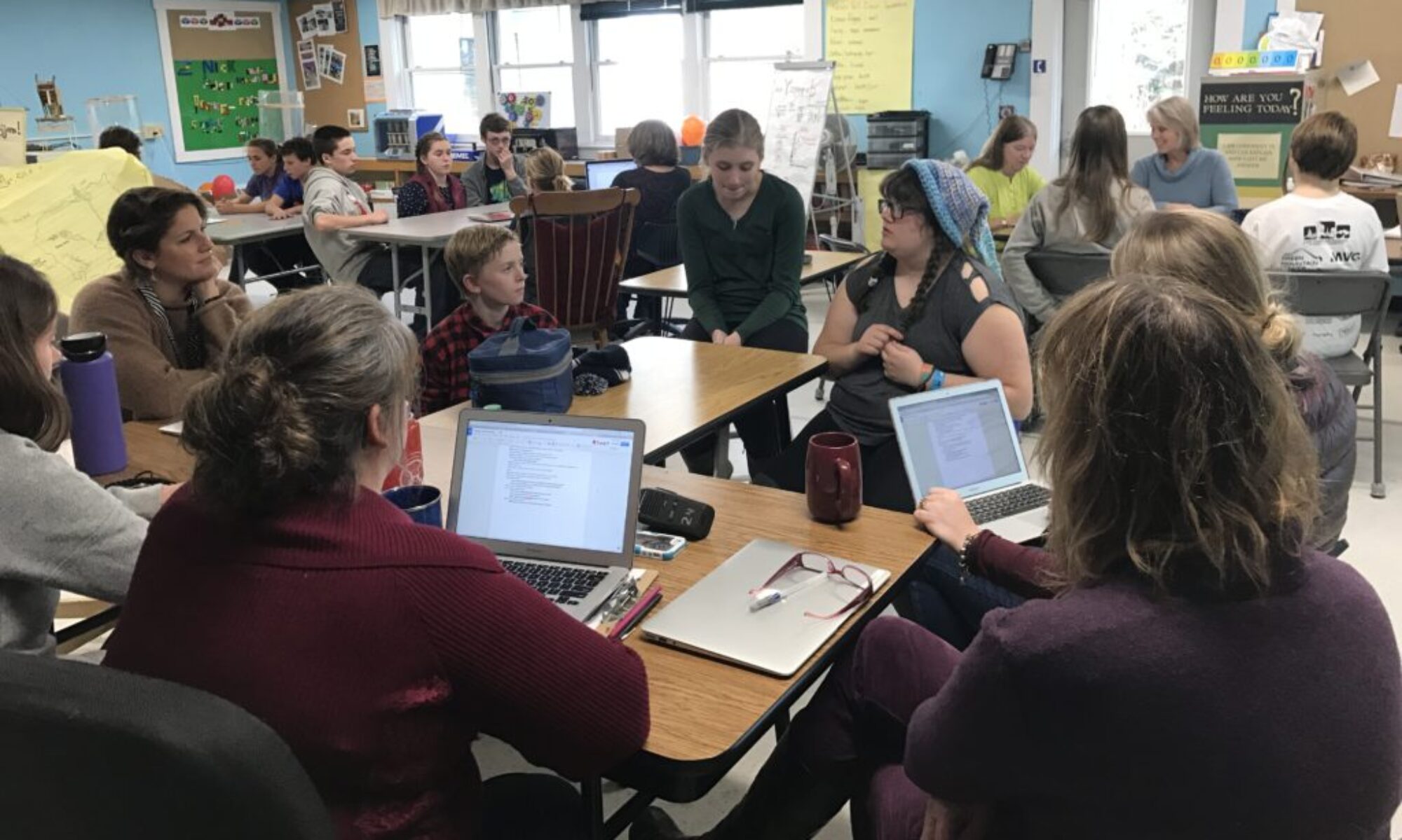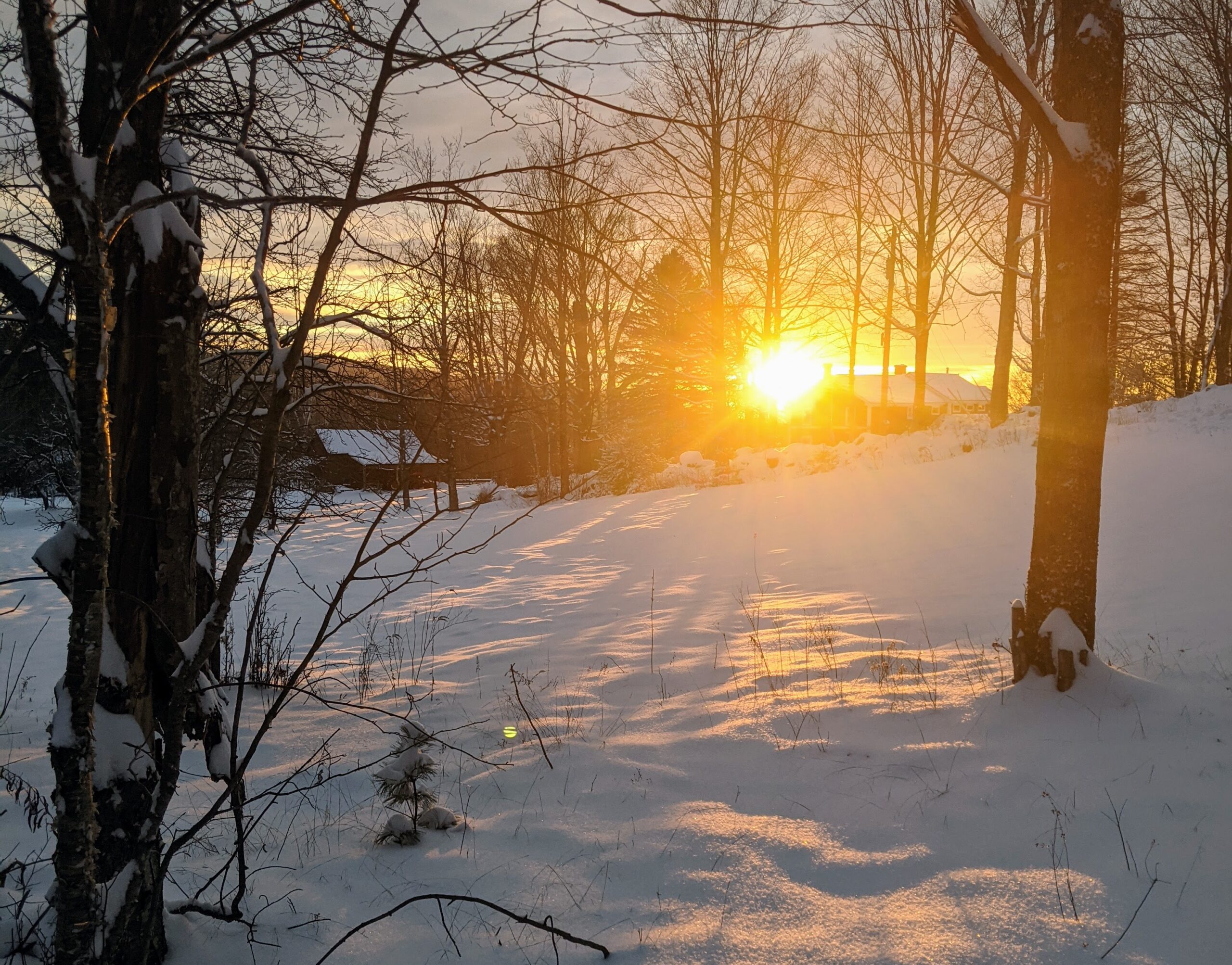Editorial Note: This post was scheduled for publication prior to the events in Washington, DC on January 6, 2021. As ever-increasing cracks in the foundation of our democracy reveal weakness and corruption, so too do these revelations allow the light of justice and truth to penetrate. As educators, our work to help young people learn to communicate across differences, think critically, and work for justice is as important as ever. This remains an apt time to reconnect and reflect. For support on challenging conversations with your students, please see How to Have Difficult Conversations about the Election for resources and ideas.
“There is a crack in everything. That’s how the light gets in.” –Leonard Cohen
This year may be Very Different, but the mile markers are the same. And right now, we’re at the beginning. A fresh new calendar collection of 12 months yet unwritten.
And yet, we’re carrying a lot. Can you feel it in your body? In your heart?
Returning to our familiar traditions and rituals can keep us feeling balanced and rooted in the familiar. As we consider our own intentions for the year ahead (or maybe just for this month, week, or even just today), we can also invite our students into this space of reflection, hope, and growth.
These crystalline days of early January offer us a chance to reconnect with one another, and reset our learning environment. To regroup, reflect and reach.
Reconnect:
Whether you’re in-person, hybrid, or remote, caring relationships are the bedrock of a thriving classroom community. And Morning Meeting is one of the best times and places to intentionally build these relationships.
Young adolescents need connection and fun to thrive. With everything else we’re juggling, it can be easy to let making time for games and activities fall to the wayside. Students are brilliant at coming up with fun activities, but if you need a few more ideas to get started, check out:
- 14 socially distanced advisory activities to liven up your connection time. Kindness Bingo, Heads or Tails, and Two Truths & a Lie are just a few of the gems highlighted here. Consider establishing a class DJ to open your morning meeting, or open the floor up for knock-knock jokes and riddles! (Laughter = good.)
But solid relationships are built on more than just games:
- 5 resources for building community features ideas on how to engage your community in meaningful dialogue, whether the topic is self-reflection, planning for success, or current events, these ideas will help you scaffold conversations. And if current events turns to politics, check out:
- How to have difficult conversations about the election for ideas on how to respectfully hold space for sensitive topics.
- 7 mindfulness activities for advisory shares movement and breathing exercises to help students cultivate grounded awareness. Mindfulness also happens to be a great strategy for mitigating stress. These practices could also be the opener to a classroom discussion about healthy ways to handle stress.
Reset…
We often speak of the first six weeks of school as the key time to establish routines and expectations so that learning in community can run smoothly. It’s also important to *return to* these explicit guidelines after breaks. If we’re proactive about setting clear success criteria, there’s less chance things will go awry. And when we co-develop these evolving expectations with students, they are much more interested in carrying them out.
Hey, yeah, you’re older and more capable than you were in September, students! How should we change it up? What’s working? What could be better? What can we let go of?
- New year? Time for a reset reviews both the why and how of re-establishing routines for student-directed learning. Whether in the classroom or learning from home, clarity is kindness.
- 8 Tips for creating classroom routines and norms gets into the nitty-gritty details of how to build these strategies into your day. Even if you created norms at the beginning of the year, it’s a great time to check-in and reflect on how well they are (or aren’t) helping everyone reach their goals.
- Establishing behavior expectations in a 1:1 is a bit of a throwback to the Before Times, when each student having 1:1 access to a computer was a new thing. BUT! There is still plenty of relevant advice in here about helping kids learn to manage their technology, which is more important than ever these days (as we all know).
Reflect & Reach
This turning of the year is a great time to look backward and forward, to reflect on how we’ve grown and changed, and to set new goals for the year (month/week/day) ahead. If your students already have personalized learning plans (PLPs) or portfolios set up it will be even easier to document and reflect. (If you’re just getting started with PLPs, check out The Definition of a PLP for some ideas.) Ready to reflect and reach for new growth?
- 8 year-end reflection tools and activities offers some creative ways to reflect, celebrate, and plan. No need to wait until the end of the year, there’s no time like the present, right? Don’t miss the Adobe spark- it’s beautiful and simple to create.
- What makes for good goal-setting in a PLP? Turns out it’s simple, if not easy: provide structure, make it personally meaningful, provide some individual support, and…make time to return to the process for reflection and further goal setting.
- Setting and tracking reading goals – and no, it doesn’t include reading logs! Hurray! Seriously though, this one has some great ideas and it even touches on how math and self-direction can play into our reading plans.
Despite a year like no other, these seasonal rituals can bring meaning, inspiration and grounding. And they will ensure that this new year gets off to a strong, connected, and aspirational start.

Whatever you decide to focus on, the key point is that we need to have explicit conversations with students about how we want things to roll, and refine together how we will manage ourselves, our spaces, and our resources. Plan for success. It’s our best shot.
How are you moving into this new year with your students?
Featured image: “The Return of the Light”, by Emily Hoyler 2020. Used with permission. All photo rights reserved.


